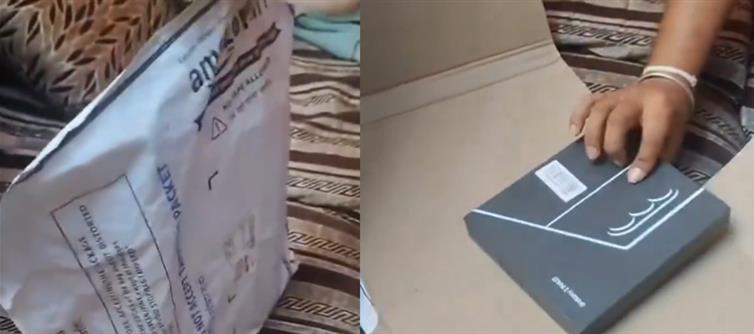
The Real Villain Behind Your Bad Online Purchases
You’ve been there.
Scrolling through amazon or flipkart, you find the perfect product — thousands of ratings, glowing reviews, and that seductive little “Bestseller” tag.
You click Buy Now, pat yourself on the back for your smart shopping, and wait for the dopamine hit of delivery day.
Then comes the shock.
The “brand new” phone looks used.
The “original” charger overheats.
The “authentic” perfume smells like mosquito repellent.
You rage at the platform — “How could amazon do this?”
But here’s the truth no one tells you: Amazon didn’t scam you. The seller did.
You Bought the Seller, Not the Product
Every time you shop online, you’re not buying from amazon or Flipkart. You’re buying from a third-party seller using their marketplace.
That one small line under the product title — the one you never notice — determines everything:
Whether you get the genuine item or a cheap counterfeit.
Whether your “brand new” gadget is actually refurbished.
Whether your return will be approved or turn into a Kafkaesque nightmare.
And yet, most people treat that seller name like Terms & Conditions — scroll past it, click Buy Now, and pray for the best.
Then they act shocked when their ₹5,000 “noise-cancelling” headphones sound like a flock of pigeons trapped in a tin can.
The Seller Is the Gatekeeper of Quality — Not the Platform
amazon and flipkart are marketplaces, not sellers. Their job is to connect buyers and sellers, not guarantee the moral character of each one.
Even a “4.5-star” product can ruin your day if you buy it from a 1-star seller.
Think of it like buying a Mercedes — from a shady used car dealer in a dark alley.
On paper, the product is premium.
In reality, you just bought a nightmare with wheels.
That’s how e-commerce works. The product rating isn’t gospel — the seller rating is your insurance policy.
The Bengaluru Tile Incident — A ₹1.86 Lakh Wake-Up Call
If you think this is exaggerated, meet the Bengaluru engineer who ordered a ₹1.86 lakh smartphone — and got a tile instead.
Thankfully, he recorded the entire unboxing process on video. That clip was his only proof when filing a complaint and demanding a refund.
No video, no evidence, no refund.
That’s India’s reality.
You can be right — and still lose — if you don’t have the receipts, or in this case, the recording.
So yes, while platforms love to advertise their “easy returns,” remember: “easy” ends the moment the seller disputes your claim.
The Holy Rule of Online Shopping: Trust, But Verify
Before you click Buy Now, do this:
Check the Seller’s Name — right under the product title.
“Sold by Amazon” or “Brand Store” is ideal.
Avoid sellers with random names like TechnoWorld@2022 or Best_Dealzz who pop up and vanish overnight.
Check Seller Ratings & Recent Reviews.
Focus on recent 1-star reviews — they tell the real story.
Look for complaints about fake items, packaging, or return rejections.
Record Your Unboxing.
Especially for high-value items (phones, laptops, watches).
One clear 30-second video can save you ₹1 lakh worth of frustration.
In India, consumer rights exist on paper — but self-defense is your only real protection.
“But It Had 20,000 Reviews!” — The Myth of Product Ratings
A 4.8-star product rating means nothing if 4.8-star sellers are replaced by fly-by-night operators who hijack the listing.
Most shoppers don’t realize that the same product page can have multiple sellers.
You might see an “official” brand store and a dozen duplicates offering “better deals.”
Cheaper? Yes. Genuine? Not guaranteed.
That “₹200 discount” could end up costing you weeks of returns, calls, and customer service pain.
In short, you didn’t save money — you paid for stress upfront.
Why You Must Be Your Own Consumer Protection Officer
In an ideal world, amazon, flipkart, or Meesho would have flawless quality control.
In the real world — this is India.
Sellers fake invoices.
Platforms play middleman.
customer care reads from a script.
So if you want justice, you must document, verify, and double-check everything.
Because when things go wrong — and they often do — you’ll find yourself fighting an invisible seller with no face, no accountability, and no urgency.
It’s Not Cynicism. It’s Survival.
You can drive perfectly and still crash if someone cuts across the road.
That’s how online shopping works in India. You can do everything right — and still get duped if you don’t anticipate stupidity on the other side.
It’s not paranoia; it’s digital street-smartness.
And until our consumer protection ecosystem evolves beyond apology emails and bots, the burden of awareness is on you.
Final Word: Don’t Just Buy the Product — Investigate the Seller
Every “scam” you read about started with someone trusting too easily.
Every “fake product” review could’ve been avoided with one glance at the seller's name.
E-commerce isn’t dangerous.
Complacency is.
So next time you’re shopping online, remember:
You’re not just buying a product — you’re betting your trust on the seller.
Choose wisely.
Because once you click Buy Now, your refund depends not on Amazon’s promises — but on a stranger’s honesty.




 click and follow Indiaherald WhatsApp channel
click and follow Indiaherald WhatsApp channel